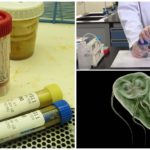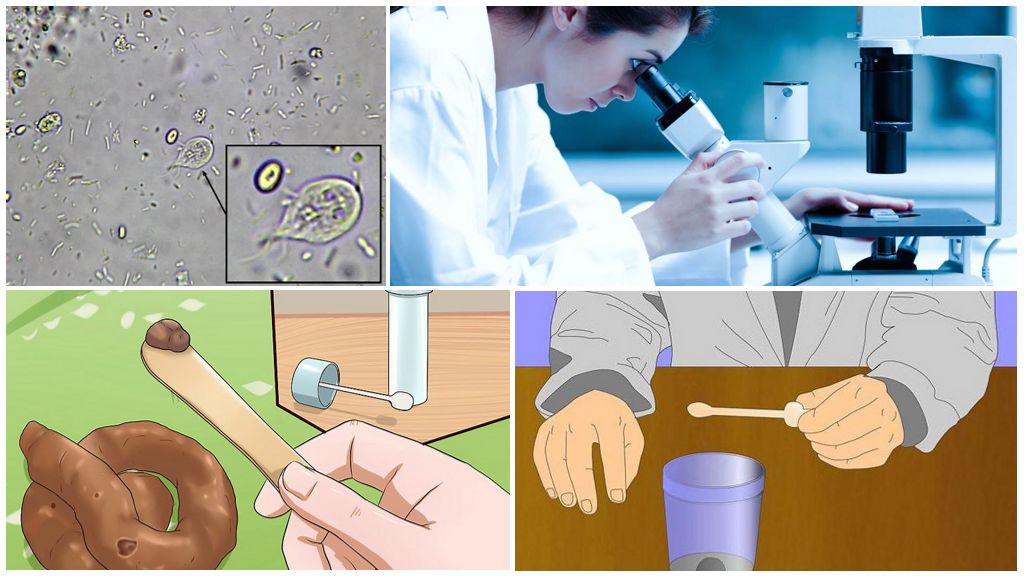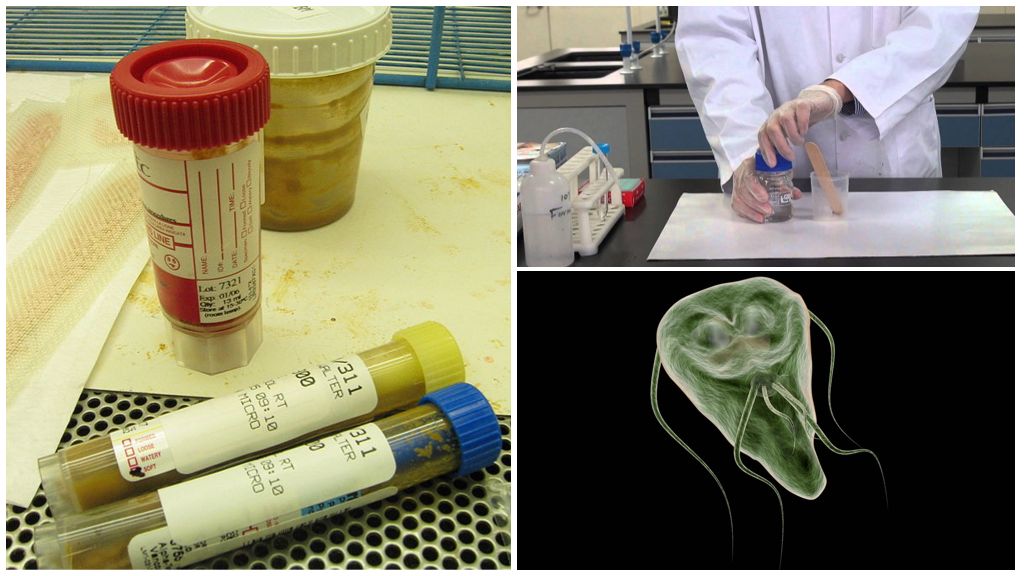How to properly pass feces on Giardia, methods of analysis
Content
- Analysis of feces on Giardia
- Analysis of feces on Giardia
Of all the parasites Giardia occur more frequently than others and cause serious harm to human health. In the diagnosis of a common method of research is the analysis of feces on Giardia. But this parasite is rarely found immediately. Sometimes tests have to be repeated, but if this is done incorrectly, then a false result is guaranteed.That is why it is necessary to understand how to properly pass feces on Giardia.
Features of the collection of analysis
There are various methods for detecting lamblia in humans. Feces for giardiasis is the easiest and most reliable option. It is passed in order to detect the parasites themselves or their eggs.
On a note!
Giardiasis often has no symptoms and therefore periodic medical examinations are very important. Such examinations are subjected to people from risk groups. These can be doctors, pupils and employees of children's school and preschool institutions, employees in the sphere of public catering and in contact with the infected.
If the adult lamblia is in the environment, then it will die within an hour and can be identified only with very fast collection and delivery of the material to the laboratory. That is why you should know how much feces collected for research are stored. Detection of cysts is more likely due to their greater survival. But here another problem arises - analysis for cysts may not be indicative, since they are not always allocated with feces and there can be periods of non-excretion up to 17 days in length.
A few simple recommendations will allow collecting material for analysis in the most correct way.
- Seven days before the planned intake of feces on giardia, they discontinue taking medicines from the group of anti-parasitic drugs and sorbents, as well as any drugs that can affect the viability of parasites.
- Due to the fact that Giardia lives in the small part of the intestine, or rather, in its upper part, it is not always easy to get them out. To get material from all parts of the intestines, it is necessary to take laxative medicines.
- It is also important how to collect feces. It is necessary to make it from different parts of the received feces, using a special spatula, which is part of the container for the fence. Do not touch the spatula or the inner surface of the feces tank with your hands.
- If you deliver a container with feces to the laboratory immediately there is no possibility, then it must be mixed with a preservative, which is taken in the laboratory in advance. The laboratory assistant places the preservative in the container immediately and it only remains to add the material itself. Analyzes of feces for Giardia in children are best carried out for a maximum of two hours from the time of collection.The preservative added to the feces will keep the parasite cysts in pristine condition for up to 30 days.
- If you need to collect feces for analysis in an infant, then the best solution would be to use a sterile diaper. Putting a diaper on the baby, the parents touch it with their hands, and the feces collected from there may give unreliable results.
Methodology
For analysis of giardiasis, it is preferable to use the feces in a liquid state. The most informative are the strokes from the last portions of the material. The study is conducted under a microscope, looking for lamblia themselves, which will move, have an oblong shape and flagella or cysts. The latter differ from lamblia in a more dense shell and in the absence of flagella.
On a note!
It is necessary to understand how much fecal analysis is done, and be ready for the necessary repetitions. If from the first time the causative agent of giardiasis is not detected, then everything is performed anew. This can be repeated three to six times with a three-day break.
Antigens in the composition of fecal masses
If giardiasis develops in the body, then antigens of a specific type are produced in response to this.The presence of the disease is indicated by their presence as well as concentration. A modern method for the diagnosis of giardiasis is the analysis of feces for Giardia antigen. Alas, this method of research is not available in every laboratory.
On a note!
Antigen test allows to determine the presence of giardiasis, even in those periods when cysts are not allocated with feces.
What is PCR and IHG
PCR analysis (polymerase reaction of the chain type) is specific and is rarely used to diagnose giardiasis. The method operates according to complex principles and therefore was previously used only for the purpose of developing science. But now it has begun to be introduced into diagnostic practice and is a promising method in the detection of Giardia. PCR of feces on Giardia allows you to identify the parasite DNA, and the accuracy of the study is almost 95%. By the time the whole process takes about one day.
Immunochromatographic rapid method or IHG analysis allows determining the development of giardiasis in the human body with high accuracy in 15 minutes. For this study, special test strips are used, which place the stool in the sample and interpret the results with the help of the instruction contained in the test. The method is based on the determination of the antigen in the faeces.
Interpretation of results
If the analysis for giardiasis is positive, the conclusion from the laboratory will contain information about the presence of cysts in the feces. In addition to this, there may be starch, lumps of mucus and leukocyte cells, which will indicate an inflammatory reaction. If giards themselves are found in the material, then this result cannot be false-positive.
Important!
A false-negative result is possible if the recommendations set out above are not observed or when the analysis is carried out during the period when Giardia cysts do not stand out. If, in the presence of symptoms, tests turn out to be negative, they are recommended to repeat them after 3 days.
Where to pass the analysis for giardiasis
It is carried out in almost any laboratory. The patient receives the result usually on the same day. The time spent by the laboratory assistant on the study of the material rarely exceeds 15 minutes, but the design and time of issuance of the forms can vary depending on the laboratory. The average cost of analysis in Moscow is in the range of 500 to 700 rubles.









